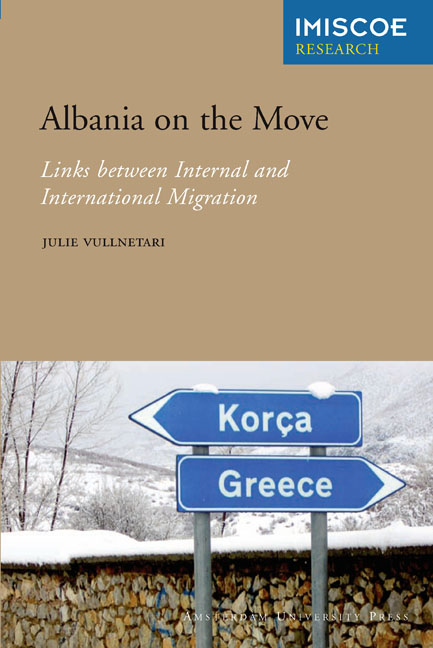Book contents
- Frontmatter
- Dedication
- Contents
- List of Tables, Figures and Photos
- Abbreviations
- Preface
- 1 Introduction
- 2 The Migration-Development Nexus
- 3 Albanian Migration and Development
- 4 Leaving Home: Migration Patterns and Dynamics
- 5 Across the Border: Migrants in Thessaloniki
- 6 Family, Migration and Socio-economic Change
- 7 Migration and Albania's Dynamic Transformation
- 8 Conclusions and Recommendations
- Notes
- References
- Other IMISCOE Titles
2 - The Migration-Development Nexus
Published online by Cambridge University Press: 19 January 2021
- Frontmatter
- Dedication
- Contents
- List of Tables, Figures and Photos
- Abbreviations
- Preface
- 1 Introduction
- 2 The Migration-Development Nexus
- 3 Albanian Migration and Development
- 4 Leaving Home: Migration Patterns and Dynamics
- 5 Across the Border: Migrants in Thessaloniki
- 6 Family, Migration and Socio-economic Change
- 7 Migration and Albania's Dynamic Transformation
- 8 Conclusions and Recommendations
- Notes
- References
- Other IMISCOE Titles
Summary
Discussions about the ways migration and development are linked together and affect one another have been going on for half a century now, with the pendulum swinging back and forth on whether migration is positive or negative for development. The two key questions in this debate have revolved around the issue of whether migration is a product of development and underdevelopment, or is itself a cause of them. International migration has, by far, taken centre stage in this discussion, although internal movements are just as – if, at times, not more – essential to aspects of development such as poverty and inequality. It is the aim of this chapter to unravel some of these complexities by analysing key theoretical and empirical contributions from around the world. The approach will be one that demonstrates a concern for the development of areas and countries where migrants originate from. It is also an approach that brings to the centre of the debate the links between internal and international migration and how they together interact with development.
Internal and international migration: Towards an integrated approach
As migration has become a prolific field of study, there is an increasing realisation of the benefits of an integrated approach stemming from the understanding that migration is a complex process, part of broader socioeconomic transformations (Castles 2007). As such, previously existing divisions between binary strands of scholarship are also beginning to be addressed. For example, there is now more talk across disciplines than before (see Brettell & Hollifield 2008), while there is an emerging interest to examine ‘mixed migration’ rather than the binaries of voluntary versus forced flows (Richmond 1994; Van Hear, Brubaker & Bessa 2009; Turton 2003). A similar trend has been recently observed in relation to the scholarship on internal and international migration, the relevant strands of which have for decades developed alongside one another with very few crossing points (see e.g. King & Skeldon 2010; UNDP 2009).
Similar to the pendulum of the migration-development debate, the focus on internal and international migration has swung back and forth in the global discussions on migration. Thus, the very first theorising on migration by Ravenstein (1889) more than a century ago was based on a survey of internal movements.
- Type
- Chapter
- Information
- Albania on the MoveLinks between Internal and International Migration, pp. 35 - 58Publisher: Amsterdam University PressPrint publication year: 2012



